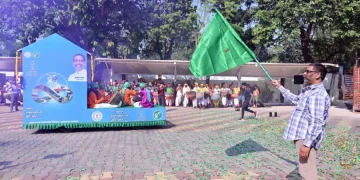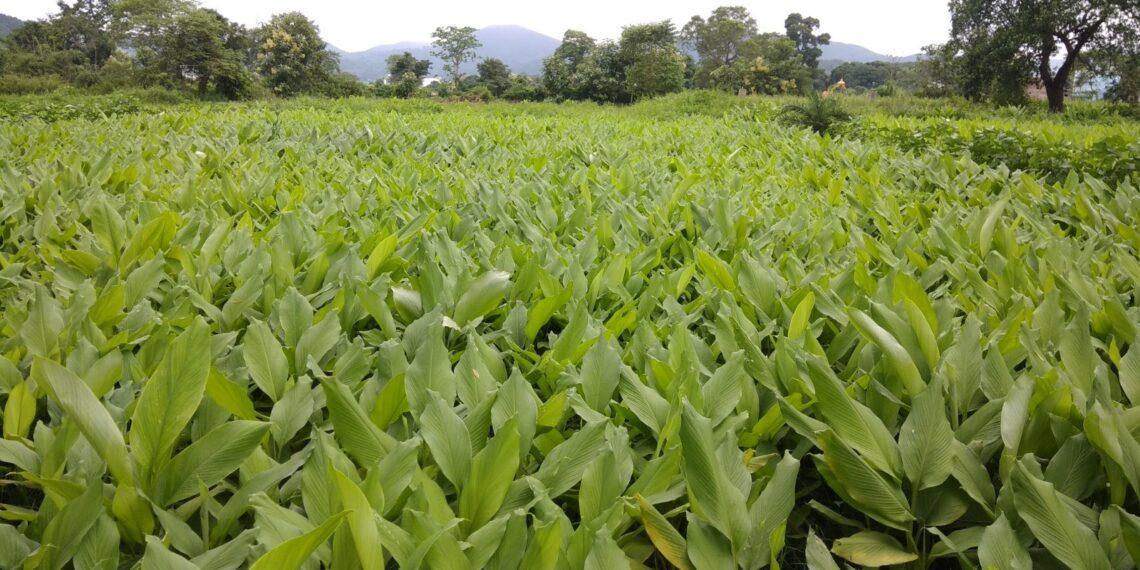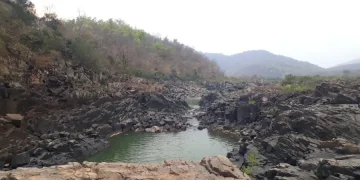Koraput/Kandhamal
Alias Pradhan (53) of village Raibanja under Daringbadi block of Kandhamal, Odisha is busy stacking bundles of Sal leaves in the small patch in the backyard of his house. For, Sal leaves that would cover the spots of his two acres of land where he has planted turmeric ‘kandas’ (seeds) would not only restrict moisture evaporation from soil, but also enhance soil fertility.
The practice is called Mulching and it generally involves covering the soil with organic materials like bark, wood chips and leaves among others so as to preserve moisture and improve the condition of the soil.
Alias, a Kondh tribal, believes that use of compost and natural seed-purifier ‘bijamrita’ and anti-fungal ‘jivamrita’, a part of organic mulching, negate the disease affliction of his turmeric crops’. This is what he and 150 farmers of 10 villages under Daringbadi block have learnt from the scientists of High Altitude Research Station (HARS) in Pottangi of Koraput and Dryland Agriculture Research Centre (DARC) in Phulbani of Kandhamal.
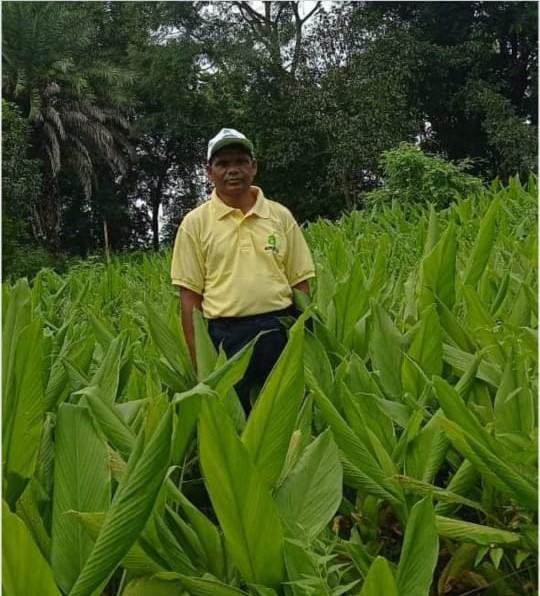
Trained by the two research units of Bhubaneswar-based Odisha University of Agriculture and Technology (OUAT) in a phased manner over the last three years, Alias and eight other farmers in his village have experimented organic mulching — the improved version of their traditional one — in their 11 acres, and witnessed substantial upturn in turmeric yield.
“Usually per acre annual yield of local turmeric varies between 40 and 50 quintals. After adoption of organic mulching, it registered 10 per cent to 20 percent increase. Besides use of compost, seed purifier ‘bijamrita’ and fungus nullifier ‘jivamotra’ are also used. ‘Bijamrita’, a slurry of fresh cow dung, bovine urine, milk and water. ‘Bijamrita’ purifies kandas of their possible toxic content, while ‘jivamrita’, a gluey concoction of water, cow dung, bovine urine and jiggery, neutralizes fungus infection that causes ‘jhaula’ (wilting),” said Alias.
Though farmers mainly use Sal leaves for mulching, they also use mango leaves. Organic mulching is the improved version of traditional one that tribal farmers have been adopting for years. Use of paddy straw or leafy mango twigs in place of leafy Sal twigs has also been advised by scientists of two research units of OUAT. After the site is covered with leafy twigs or straws, thorny junglee plants are placed on the spot in such a way that strong winds cannot blow them away.
Mulching restricts the rate of evaporation of moisture from soil, while keeping the spot warm during winter and cool during summer. Turmeric crop requires 20 to 35 Celsius of temperature and an annual rainfall of about 1500 mm to grow properly.
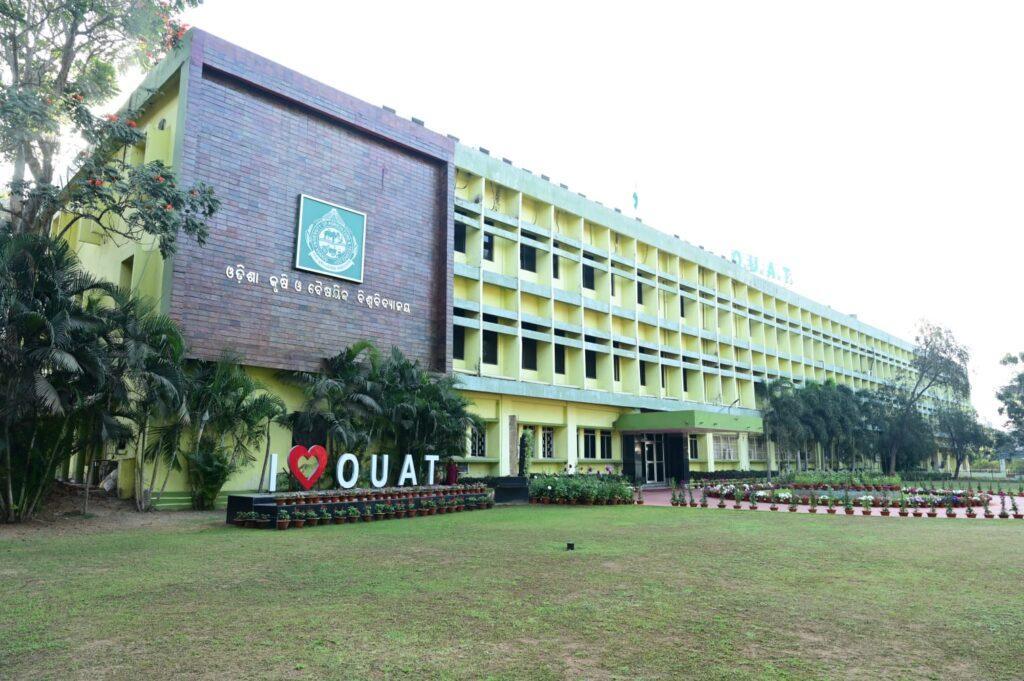
“In traditional mulching, soil retains its moisture for about two days, while in organic mulching, an improved version, enables moisture to remain for more than five days,” said DARCs senior scientist Dr. Subrat Kumar Behera. The leaves decompose slowly and also serve as natural manure, he added.
“We also freely distributed samples of improved seed varieties Roma and Lakdong among 10 farmers in Raibanja and Irpisaru villages under Daringbadi block. Annual per acre yield of Roma and Lakdong varies between 70 and 80 quintals which also have 10 percent to 20 percent increase under organic mulching,” he added.
HARS and DARC also advise farmers to grow turmeric in raised earthen beds (each measuring about three feet in breadth) in their fields, providing canal on their both sides to drain out excess water.
“Earlier, farmers planted turmeric seeds haphazardly in their land. But during their training on oraganic mulching we advised them to set raised bed structure in their fields to avoid damage caused to crops due to waterlogging during excess rain,” said HARS senior scientist Prasuram Sial who, along with the scientists of FARC, dashes to Kandhamal from Koraput every year to impart training. “We also advised farmers to use paddy straws in place of sal leaves, when required,” he added.
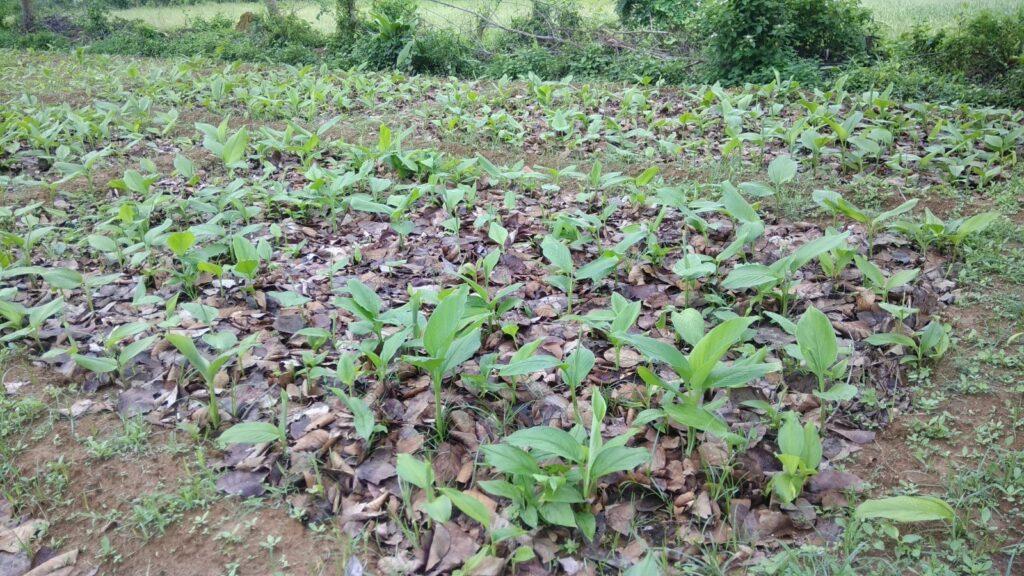
While Sal leaves are primarily preferred to be used in mulching in villages, dead mango leaves are of secondary use. Now about 50 tribal farmers in 10 focus villages of HARS and DARC also use paddy straws as per the advice of scientists. Sal leaves are said to be preferred as they are larger in size and leave no gaps among themselves during mulching. On the contrary, chances of possible gaps can occur in the spread of mango leaves during mulching.
Besides, dead mango leaves are collected during November-December when they are shed while turmeric seeds need mulching soon after they are planted in May-June. Similarly, straws are collected during November-December, the harvest time for paddy.
“While those farmers use old straws of the previous year that had stocked, others purchase bundles that cost around Rs. 5. So most farmers prefer Sal leaves that are collected from nearby forest before March, stacked in bundles and sundries for about a fortnight to be ready for use in May-Lune when turmeric farming commences,” said Parsuram Pradhan (48) of Irpisaru village under Daringbadi block. Parsuram is one of the 12 farmers of his village, who, trained by HARS and DARC, have adopted organic mulching in 14 acres.
“The bumper yield of turmeric, the result of organic mulching, now fetches us an annual income of around Rs. 2,000,00 on an average per farmer, which had been hovering about Rs. 40,000 earlier when we had been using only our traditional method of mulching,” said Alias.
“We boil freshly harvested turmeric pieces, and dry them in the sun and sell them at Rs. 80 to Rs. 100 per kilogram, while freshly harvested pieces sells at Rs. 15 to Rs. 20 per kilogram,” he added.







